Over five decades, Essar has seen tremendous transformation. Our DNA, though, remains unchanged since we began operations in 1969. Each of our milestones are testimony to the fact that we invest with the spirit of an entrepreneur, build assets with the passion of an owner, and manage businesses with the discipline of a professional.
Copyright © 2024 Essar. All rights reserved.

Rewant is a member of the Ruia Family which is the founding family of Essar. His global exposure, fresh perspectives and arc of activities has contributed to Essar’s strategy and operations in the mining, steel and retail sectors both in India and abroad. He completed his MBA from Stanford Graduate School of Business in 2013.
Rewant is currently focussed on Essar’s greenfield expansion and evaluating acquisition opportunities in Metals and Mining sector. Frequently traveling between the New York, London, Middle East and Mumbai, he helps drive the strategy of Essar’s Metals & Mining operations in United States and Oil & Gas Business in UK. He was part of the asset acquisition team that helped forge strategic integration across the raw material to steel value spectrum in North America.
Rewant also concentrates on evolving the organizational design for Essar’s next phase of growth. He likes building relationships, working with teams and operational efficiency. Therefore, he focuses on streamlining work flows, people systems and processes through the use of planning and technology.
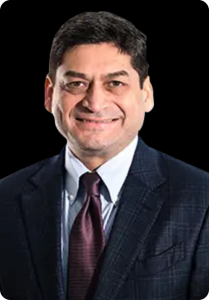
Prashant is part of the second generation of the Ruia family that founded Essar. Essar was founded in 1969 by his father, Shashi Ruia and uncle Ravi Ruia.
Prashant has been an integral part of EGFL’s operations and management since 1985 and has been a key driver of the Fund’s growth, diversification and value creation both within India and internationally. He is respected for his project execution skills, financial expertise and people management capabilities.
Prashant holds key positions on several prestigious regulatory and professional boards. He is a member of the UK India Business Council and a member of the India-Indonesia CEO’s Forum.
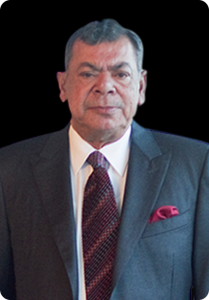
Shashi Ruia, a first-generation entrepreneur industrialist, has made invaluable contributions to the core industrial and infrastructure sectors in India and has steered Essar to a prominent position in the global industry.
Mr Ruia began his career in the family business in 1965 under the guidance of his father, the late Nand Kishore Ruia. Along with brother Ravi, Shashi Ruia laid the foundation of Essar and spearheaded its business strategy, diversification and growth. Today, Essar Global Fund Limited (EGFL), which owns the businesses the brothers co-founded, is a global investor, owning a number of world-class assets diversified across the core sectors of Energy, Metals & Mining, Infrastructure, Technology and Services. The Fund’s portfolio companies generate aggregate revenues of US $14 billion. These companies operate more than 50 assets spread across the globe, while adhering to international standards of health, safety, environmental protection and corporate governance.
Essar has time and again demonstrated its ability to build and operate world-class assets that have elicited the interest of the best global players. Essar’s portfolio businesses in the Telecom, BPO and Oil & Gas sectors have attracted more than US $40 billion of monetisation proceeds from global majors, like Vodafone, Rosneft, Trafigura and Brookfield.
Shashi Ruia’s vision saw Essar gain a first-mover advantage in many businesses. For example, when the Indian telecom sector was opened up for private participation, Essar was among the first companies to offer mobile telephony services.
Mr Ruia is on several important national bodies and industry associations. He was on the managing committee of the Federation of Indian Chambers of Commerce and Industry (FICCI), an apex body of India’s trade and business associations. He has also been the Chairman of the prestigious Indo-US Joint Business Council and is a former president of the Indian National Shipowners Association (lNSA). Mr Ruia is a member of the PM’s Indo-US CEO’s Forum and India – Japan Business Council
In 2007, Mr Ruia joined an elite list of achievers, which includes the likes of Richard Branson, Peter Gabriel, Ray Chambers, Pam Omidyar, Amy Robbins and Richard Tarlow, who independently fund The Elders. The Elders is a group of world renowned personalities, comprising Desmond Tutu, Graça Machel, Kofi Annan, Jimmy Carter, Li Zhaoxing, Mary Robinson and Muhammad Yunus, who have joined hands to tackle the world’s most difficult problems.
Mr Ruia was also the recipient of the Business India Businessman of the Year Award 2010.
Widely regarded as one of the architects of modem India, Shashi Ruia has a passion for education and mentoring young talent. He is proud of all the employees of Essar who have done well for themselves under his stewardship.

Ravi Ruia belongs to the generation of industrialists who have played a significant role in leading India’s industrial renaissance. An engineer by training, his entrepreneurial abilities have enabled the Essar Global portfolio of companies to become one of the leading names in global industry.
Ravi began his career in the family business and has worked with his elder brother, Shashi Ruia, toward steering the company to its current position of eminence, helping in the consolidation of its businesses and through setting up overseas ventures.
The two brothers, Shashi and Ravi, jointly founded Essar Global Fund Limited (EGFL) as a diversified global private fund exclusively managed by its investment manager, Essar Capital Limited. EGFL is a global investor, controlling a number of world-class assets diversified across the core sectors of Energy (comprising Exploration & Production, Refining & Marketing and Power businesses), Infrastructure (comprising Ports, Terminals and EPC businesses), Metals & Minerals, and Services & Technology (comprising Shipping, Oilfield services and Technology Solutions).
EGFL invests long-term capital into the portfolio companies and holds near 100% stake in all its investments. EGFL invests with a sense of active ownership, which involves direct engagement with the management of the respective businesses. The portfolio companies have aggregate revenues of about USD 13 billion and employ over 7,000 people.
Essar has time and again demonstrated its ability to build and operate world-class assets that have elicited the interest of the best global players. Essar’s portfolio businesses in the Telecom, BPO and Oil & Gas sectors have attracted more than $30 billion of monetization proceeds from global majors, like Vodafone, Rosneft and Trafigura.
Ravi has overseen Essar’s globalization plans, including new ventures in the United States, Africa, South East Asia and the Middle East, and has led several investments and divestments for Essar globally. Ravi was a recipient of the Business India Businessman of the Year Award 2010.
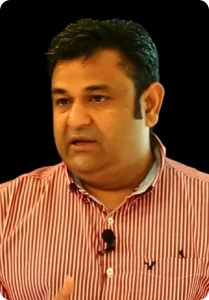
Alok Gupta is the Operating Partner, Technology & Retail, at Essar Capital. With over 32 years of work experience in the technological sector, Alok leads all new capital investment recommendations to the company’s board.He joined Essar as CEO Retail in the year 2010. Subsequently he took responsibility as President – Global Markets & Strategy since 2012 where he was responsible for sales, pricing strategy, marketing, and product & category management for the Steel business.Prior to joining Essar, he has worked with Café Coffee Day and UB Spirits.
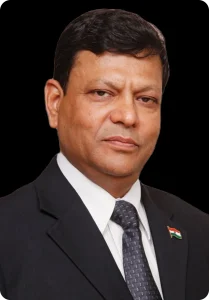
Mr Naushad Ansari is Managing Director, Business Development, at Essar Capital. He would be responsible for advising and leading the company with regards all investments and opportunities in the metals & mining sector.
He is an experienced professional and an industry veteran, with 33 years’ experience with Tata Steel and 11 years with Jindal Steel & Power. He is a strong business development professional with a Mechanical Engineering Degree from Aligarh Muslim University.

Madhu Vuppuluri is the Operating Partner, Metals & Mining, Essar Capital. With over 27 years of work experience in diverse industries ranging from Manufacturing (Metals, Mining & Power Generation) to Services sectors (Commercial Airline and Technology, inclusive of Business Process Outsourcing sectors), he provides strategic direction to the management of the Mesabi Portfolio. Madhu’s expertise lies in the area of mergers & acquisition, fund raising, investor relations, and operations management, and leads future capital investment recommendations to Essar Capital’s Board of Directors.

Jatinder Mehra is the Vice Chairman & Operating Partner of Essar Capital. With more than 50 years of experience, he guides Essar through transformations, manages operating functions and leads complex projects.Mr Mehra is involved in various Essar initiatives in areas of Business Strategy, Investments, Corporate Governance, Risk Management and Sustainability.Prior to joining Essar Capital, he lead several reputed public sector and private steel companies, including Steel Authority of India Limited and Rashtriya Ispat Nigam Limited as their Chairman and Managing Director.
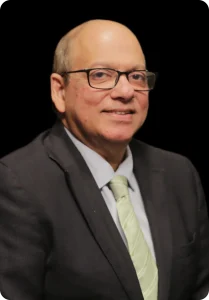
Rajiv Agarwal is the Operating Partner, Infrastructure, at Essar Capital and Managing Director, Essar Ports.He has over 30 years of experience and has held leadership positions in sectors such as Ports, Shipping, Telecom, Retail and Business Processing Outsourcing. He was appointed as MD & CEO of Essar Shipping, Ports & Logistics Limited in 2010.He Joined Essar in 1997 as COO in Essar Telecom and was the Executive Director of Essar Shipping Limited from 1998-2002.
He has been a key member of several industry committees like Confederation of Indian Industries, Federation of Indian Commerce Industries, The Associated Chamber of Commerce & Industry of India and SUPERBRANDS for several years.

Rahul Taneja is the Managing Director, Human Capital at Essar Capital. He is responsible for all HR matters for the Metals & Mining and Services & Technology portfolios.
Rahul is a seasoned professional with more than 28 years of experience specialising in areas of recasting HR and business processes, right sizing and cost optimisation. He also has rich experience in leading change management, cultural transformation, organisational redesign and restructuring. He has held key leadership positions at Jindal Steel & Power Ltd, Jet Airways, Essar and Dell international.
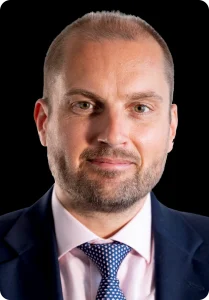
Andrew Wright is the Managing Director, Legal, at Essar Capital. He is responsible to advise and represent the company for all the legal matters concerning the Energy sector investments and portfolio businesses.
Having completed his law degree from the University of Leeds, United Kingdom, Andrew has over 25 years of rich experience.
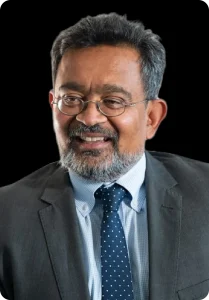
Mr Viral Gathani is the Managing Director, Finance, Energy, at Essar Capital. He is a seasoned professional with over 27 years of experience, including 23 years in international investment banking & private equity. He has led natural resources sector businesses for major investment banks globally. He has also advised boards and management on major transactions in 34 countries.Viral has held key leadership positions at Vedanta Resources Plc, CIMB Securities/ Royal Bank of Scotland, Warburg Pincus, Citigroup, and Credit Suisse.
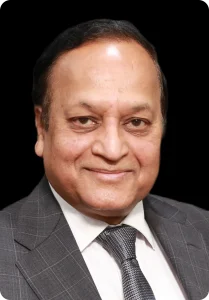
Sunil Jain is the Operating Partner for Energy transitions. He brings with him 39 years of experience, and has extensive experience in the renewable energy sector.Prior to Essar, he was the CEO & Executive Director of Hero Future Energies Pvt Ltd. He started his career with Escorts Limited where he worked and grew through various roles of operations and business development. Sunil is also the President of Wind Independent Power Producers Association.In 2012, he was awarded an excellence award for his contribution to renewable energy and sustainability by the Energy and Environment Foundation. His academic research paper on “Sustainability and Renewable Consumption Obligation” has been presented at forums of international repute.
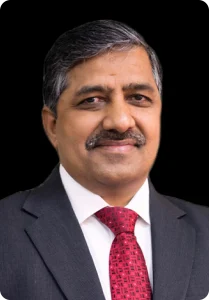
B.C. Tripathi is the Vice Chairman, Exploration & Production at Essar Capital, and has over 36 years of experience across Operation & Maintenance of Pipelines, Project Management, Contracts Management, Customer Relationship Management, Marketing etc. He is the former Chairman and Managing Director of state-run natural gas giant GAIL India Ltd and had started his career in Oil and Natural Gas Corporation.

Rakesh Kankanala is the Managing Director, Managing Director, M&A, Infrastructure, of Essar Capital. An MBA from IIM Lucknow, Rakesh is a qualified Engineer from NIT, and brings with him 13 years of experience. Prior to being the Managing Director at Essar Capital, Rakesh has been at leadership positions in Essar Ports. Earlier on he has worked with TCS in the beginning of his career.
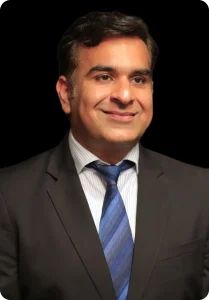
Kailash Daultani currently serves as the Managing Director, Treasury and Finance, at Essar Capital. With 18 years of experience, he has also served as the Senior Vice President, International Projects and Corporate Finance, with Essar Services. A qualified chartered accountant, Kailash joined Essar in 2003 after working with Chaturvedi & Shah and Dewani & Co.

Adithya Bhat, with over 27 years of experience in Governance, Risk and Compliance (GRC), is the Chief Risk Officer at Essar Capital. He is responsible for investigation, analysis and assessment of risk, and accordingly design and implement strategies and processes which mitigate these threats. He also ensures the successful delivery of the organisation’s corporate and business plans and desired outcomes.
Prior to this, he was a partner with KPMG’s risk consulting practice focusing on enterprise and compliance risk management, partnering with leading multinational companies in areas of GRC in India, North America and Middle East.
He has also led digitalisation initiative in GRC space and was instrumental in running technology-based solution around enterprise risk, compliance risk, license management and document repository systems. In addition, in an honorary capacity, Adithya is currently the Senior Vice President at the India Chapter of Institute of Internal Auditors Inc, USA and President elect for 2021 – 22.
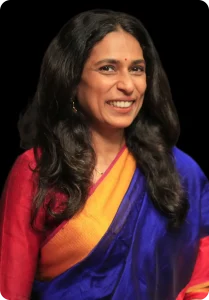
Priya Chakravarty is the Senior Director, HR, at Essar Capital. She has more than 23 years of experience in Human Resources, having worked across industries like Manufacturing, Pharma, IT and Retail. In her last assignment as Chief People Officer – Hometown & Ezone, Priya was responsible for driving a transformational HR agenda that focused on organisational culture, building a talent pipeline, and initiating & aligning all people practices to business achievement. She has earlier worked with Cipla as Head HR – International Business and has also volunteered with the Akanksha Foundation. In her earlier stint with Essar, Priya has worked at Senior Management roles, initially with Essar Oil and then as Head – International HR (Corporate HR).

Sanjay Palve is the Sr. Managing Director, Finance, Infra, Tech & Retail, at Essar Capital. He is responsible for capital raising, financial performance improvement, risk monitoring and corporate banking. Sanjay is a seasoned professional with more than 22 years of stellar experience in building and leading large financial businesses across wholesale and retail segments.
Prior to joining Essar, he was the CEO of Religare Finvest Limited (RFL) and the Managing Director of Religare Housing Development Finance Corporation (RHDCL). He has held key leadership positions at YES Bank Ltd. and ICICI Bank Ltd. Recently, he was also awarded ‘Business Leader of the Year’ in the NBFC segment by ET Now.

Dhanpat Nahata is the General Partner, Strategy and Risk, at Essar Capital. With over 20 years of experience in the field of M&A and transactions, he leads all the M&A structuring on complex transactions globally for Essar Capital. He is a part of the Management Committee of Essar Capital.
Prior to joining Essar, he was associated with EY as a Partner for 11 years.
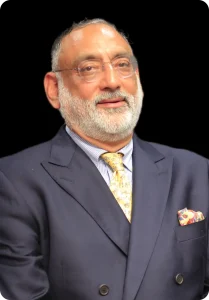
Haseeb Drabu is an economist with over 30 years of experience with diverse skill-sets and wide-ranging experience as a lawmaker, policy planner, banker and an economic commentator.
He has worked as an Economic Advisor, and the principal economic policy maker at the state level for seven years. He was chairman and chief executive of J&K Bank for five years. In his avatar as editor of a business daily, he also made his mark as a widely respected and incisive columnist on macroeconomics, fiscal and monetary policy.
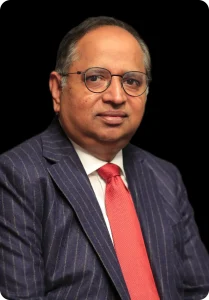
Srinivasan Vaidyanathan is the Operating Partner, Technology & Retail, at Essar Capital. With over 30 years of experience in operational leadership, investment management and business growth across diverse sectors, Srinivasan provides a critical evaluation of current and future capital investments.
His strength lies in leading new business development opportunities and conducting preliminary due diligence and analysis of emergent companies and partners.
Prior to Essar, he has worked with Archean Group as Group President, and with SIVA group as CEO for about 15 years.
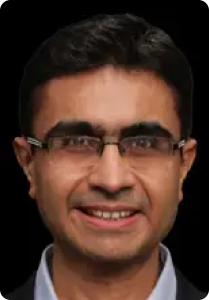
No content available

Anshuman Ruia is part of the second generation of the Ruia family that founded Essar. Essar was founded in 1969 by his father, Shashi Ruia, and uncle Ravi Ruia.
Mr Anshuman Ruia is known for his financial expertise and project execution skills. He has overseen Essar’s BPO and Power businesses, and was instrumental in creating Aegis, the BPO arm of Essar. The Aegis business was monetised at a value almost 20 times the investments made. He is also responsible for the expansion and diversification of the Power business into new, renewable energy sources and its entry into the transmission and distribution segment.
Mr Ruia is a member of the YPO (Young Presidents Organisation), a connoisseur of music and a keen table tennis player.

With a mission to promote awareness about menstrual hygiene, the Sahej mobile app was launched to provide knowledge & access to affordable menstrual products to women from all social classes. Click here to download the app.
Over 4,00,000 sanitary napkins distributed to women in Mumbai slums & Mumbai police.
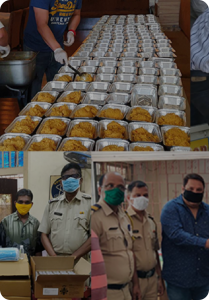
With a mission to promote awareness about menstrual hygiene, the Sahej mobile app was launched to provide knowledge & access to affordable menstrual products to women from all social classes. Click here to download the app.
Over 4,00,000 sanitary napkins distributed to women in Mumbai slums & Mumbai police.
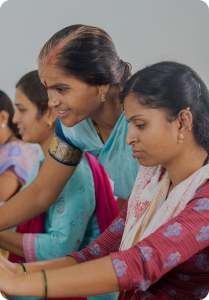
No content available
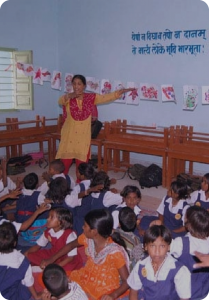
No content available
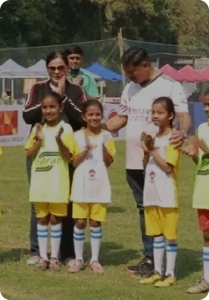
No content available
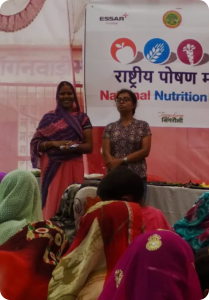
No content available
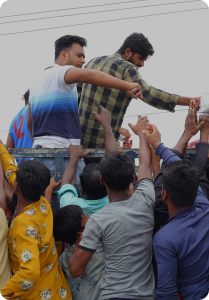
No content available
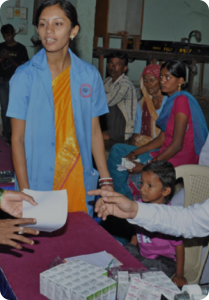
3Ply masks, N95 masks, Personal Protective Equipment (PPE), protective gloves, hand sanitisers and hand soaps supplied to hospitals, police stations, CISF and village communities
Installed a Walk-in Sample Kiosk (WISK) Chennai hospital
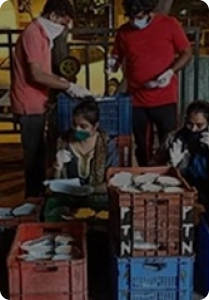
Meals/ dry ration/ vegetable kits provided to slum dwellers, migrant labourers, marginalised families, ragpickers, orphanages, transgenders and families in remote villages/ Adivasi tribes.
Ready to Eat (RTE) meals served to frontline warriors, i.e. doctors, police, etc

Smiti is a self-driven business leader and a true entrepreneur at heart. With over 15 years of experience in diverse fields including media & publishing, corporate communications, and mergers & acquisitions, Smiti Kanodia has been a guiding force behind the evolution of corporate brand communications and human resource management at Essar.
In her current capacity at Essar, she is actively involved with the Group’s Corporate Social Responsibility initiatives through Essar Foundation. Her keen interest in sustainable business practices and corporate citizenship has manifested in connecting with CSR evangelists and bringing global best practices to the organizations she supports.
In the past, at just 24 years, Smiti founded a publishing company, Paprika Media, which published the internationally acclaimed entertainment and lifestyle magazine, Time Out. The magazine, which had a readership of 6 lakhs, published editions from three cities in India—Mumbai, Delhi and Bangalore—and created well-known media properties, like the Time Out Food Awards.
Smiti’s ability to provide a unique perspective on brand strategy through the combination of creative thinking comes from her education in both finance and publishing. She received her bachelor’s degree in Finance & Marketing from New York University’s Stern School of Business and a postgraduate degree in Publishing from the London College of Printing. Early in her professional career, she worked as a Mergers & Acquisitions analyst in the telecommunications sector at Lehman Brothers in New York.
A member of the founding family of Essar, Smiti is the daughter of Madhu and Ravi Ruia, who is co-founder of Essar. She is married to Nishant Kanodia, Vice Chairman of the Matix Group, Smiti and Nishant have two children.
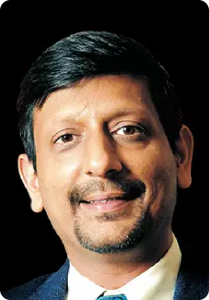
Vikash Saraf is the non-executive director of Essar Capital. He has over 25 years of work experience in the field of M&A and Transactions.
He joined Essar in early 2000 and has played a key role on strategic investments of Essar in core economy and infrastructure sectors. Vikash is also a member of the Management Committee of Essar Capital.
Prior to joining Essar Capital, Vikash was an Executive Director and CEO of SSKI Corporate Finance Ltd, a boutique investment bank specialising in infrastructure financing and advisory.
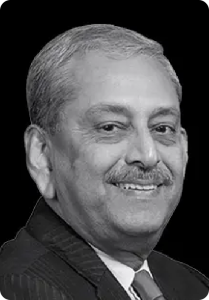
No content available

No content available
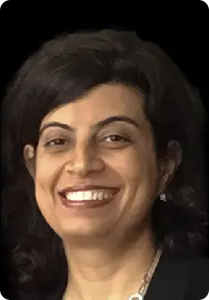
No content available
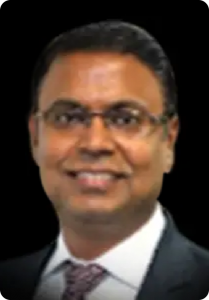
No content available
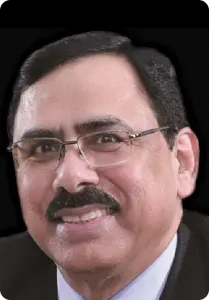
No content available